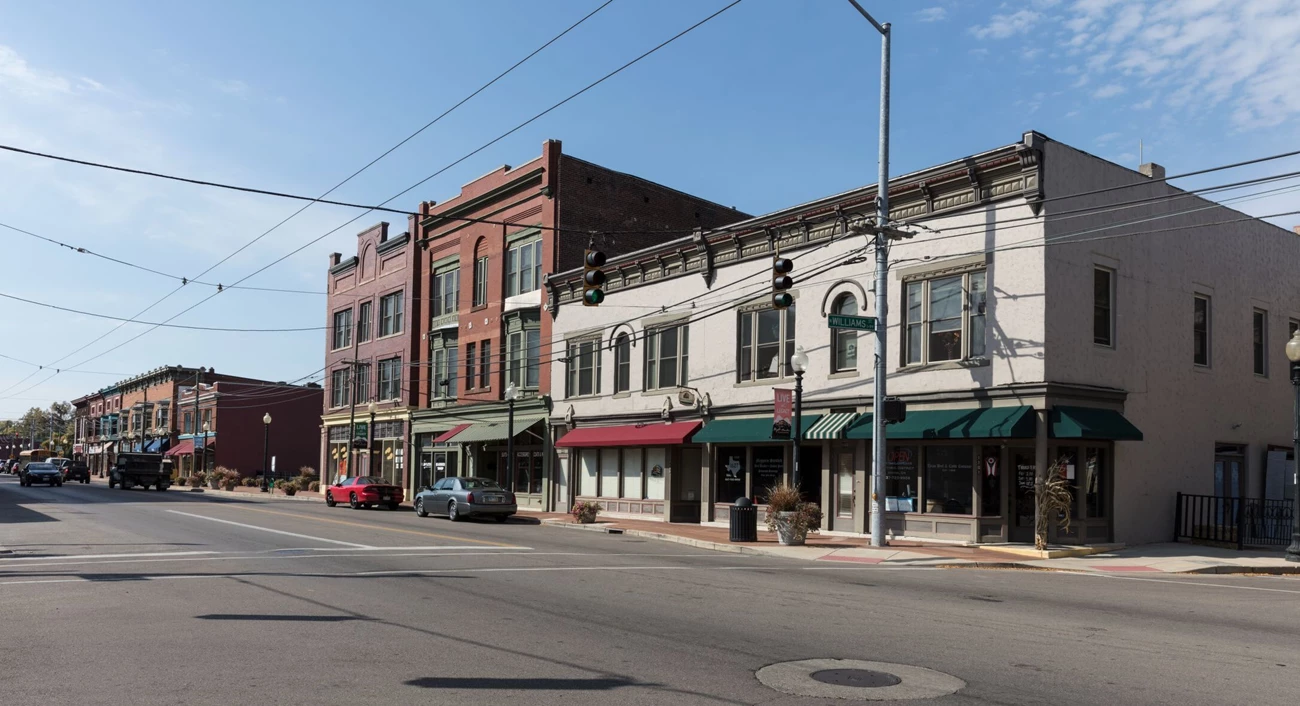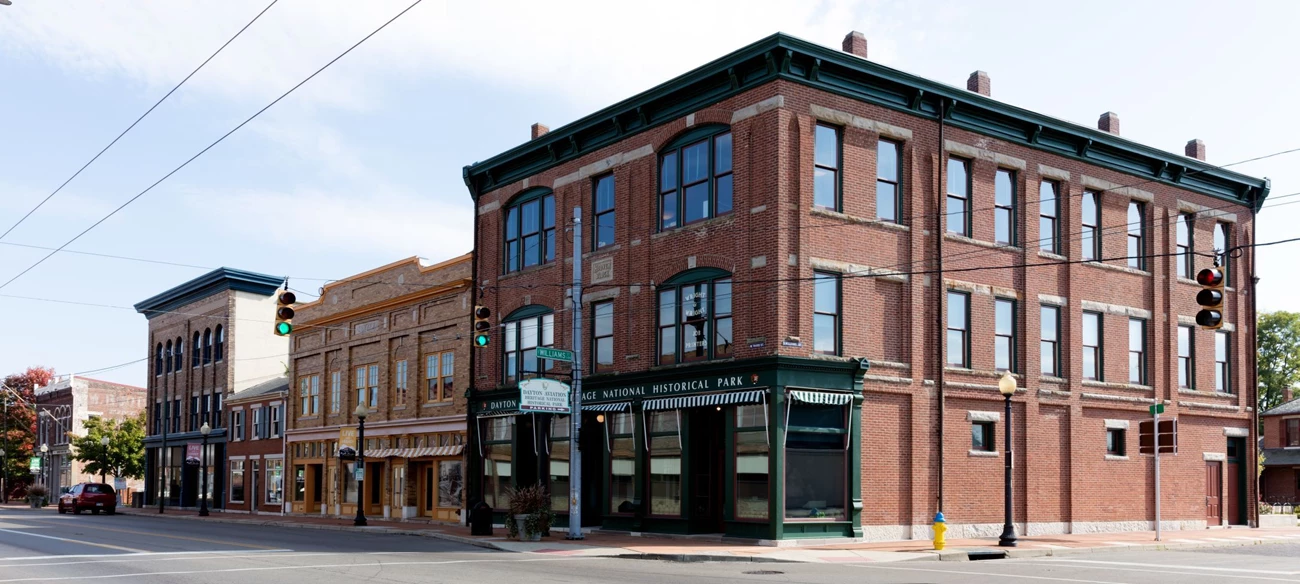Last updated: January 31, 2024
Article
West Third Street Historic District Cultural Landscape
Introduction
The West Third Street Historic District, a historic designed landscape in Montgomery County, Ohio, occupies 10.1 acres along Third Street, Dayton’s main east-west thoroughfare. Dayton Aviation Heritage National Historic Park manages four structures within the district. The district, composed of two- and three-story brick buildings of varying architectural styles, is characterized as a suburban streetcar commercial block with a period of significance from 1885 to 1924. Visitors can observe examples and elements of architectural styles including Romanesque Revival, Italianate, and Classical Revival, among others.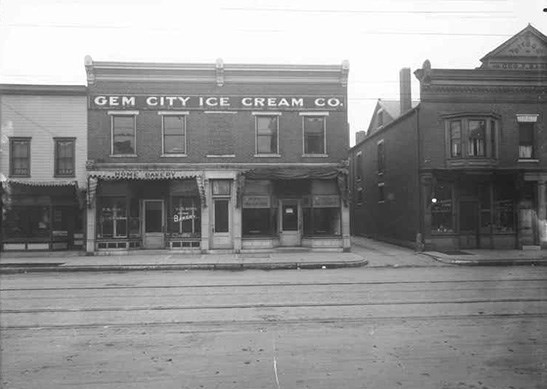
NPS / Dayton Aviation Heritage National Historic Park Archives
The first building at the southeast end of the district is the Gem City Ice Cream Building, which offered the first manufactured ice cream in Dayton.
In addition to the architectural variety, the district is historically significant for its connection to Orville and Wilbur Wright, inventors of the first mechanically powered airplane, and Paul Laurence Dunbar, one of the first world-renowned black American poets.
Description
The south side of West Third Street has an important late nineteenth century collection of commercial Romanesque buildings. Buildings that represent the Romanesque Revival style include Mory’s Block, Gunkel Block, Webbert Flats, the Setzer Building, the Booth Building, the Enterprise Building, the Needham Building, and Hoover Block. The Hoover Block, constructed in 1890, was the location of the Wright Brothers’ printing business. The National Park Service rehabilitated this building in 2003 as an aviation museum.Despite a variety of architectural styles, structures within the District display visual cohesion through repeated materials and forms. These include metal cornices, brick, and the overall rhythm of the facades. Original building materials exist for some structures and the stabilization or full restoration of others allowed for sustained historic integrity. In total, the district contains 26 structures that contribute to its significance, primary organized in a grid pattern along the linear West Third Street. The structures, and the district itself, resemble the 1885 to 1924 appearance through the retention of their original location, design, building materials, and workmanship.
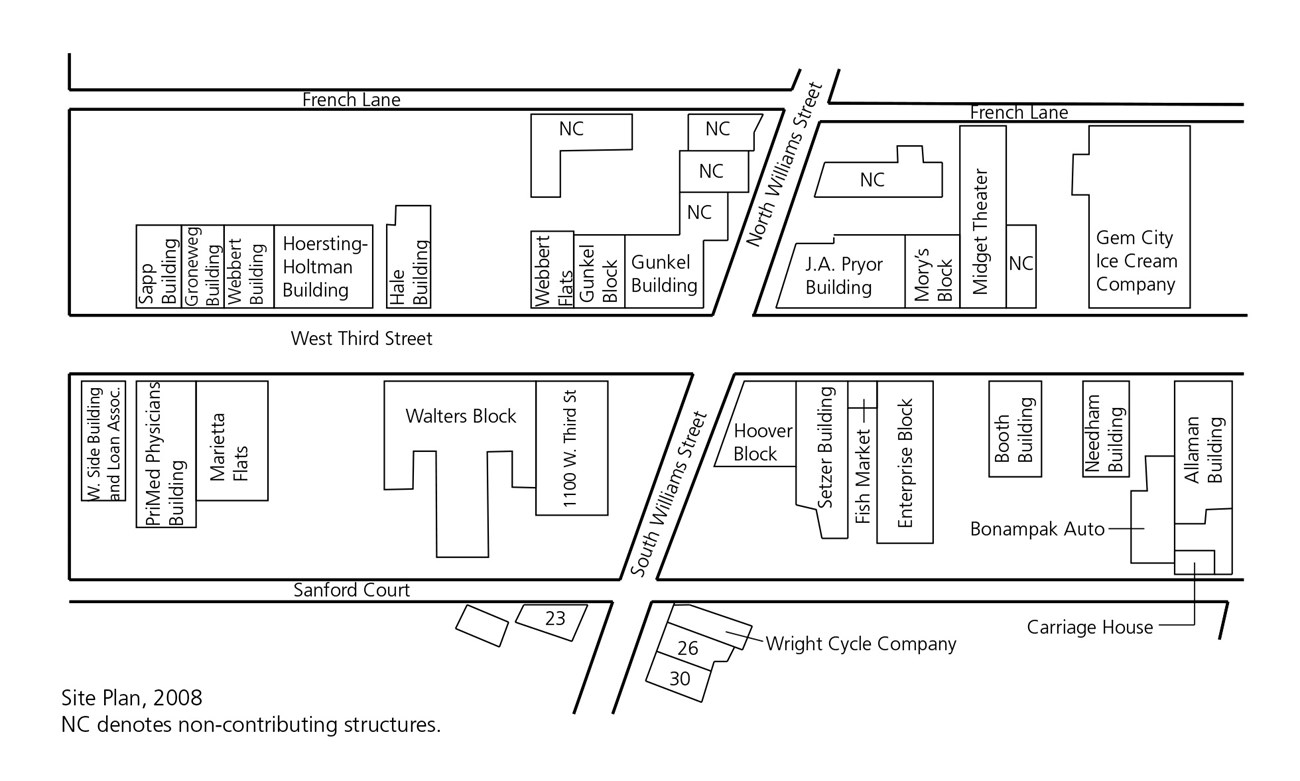
NPS / MWRO Cultural Landscapes Program, 2008
Historic Use
The district is historically significant for its association with the development and expansion of the city and for its association with people significant to American history. The Dayton Street Railway served as Dayton’s first source of public transportation in 1869. Financiers intended to encourage real estate development on remote farmland. In response to the increased accessibility and potential patronage, commercial buildings were added along the line to the West End in the late nineteenth century, with residential areas growing up behind it. It stands apart from other streetcar commercial blocks in Dayton for being more urban, compact, architecturally distinguished, and dominated by two and three story buildings.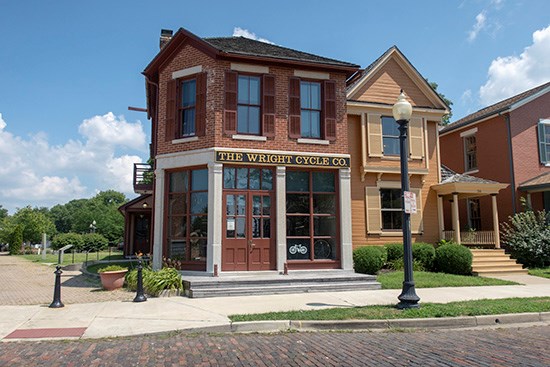
NPS / Leah Edwards
Another historically significant individual, Paul Laurence Dunbar, called Dayton home at the turn of the 20th century. Dunbar wrote poems, as well as novels, songs, short stories, and essays critically acclaimed for their dialectic style and representation of black life in America. The Paul Laurence Dunbar house, which Dunbar originally purchased for his mother in 1904, serves to commemorate his legacy. He spent the last two years of his life in the house finishing his last works before succumbing to tuberculosis in 1906. The Paul Laurence Dunbar home is part of Dayton Aviation Heritage Park and is located six blocks from the Wright-Dunbar Interpretive Center.
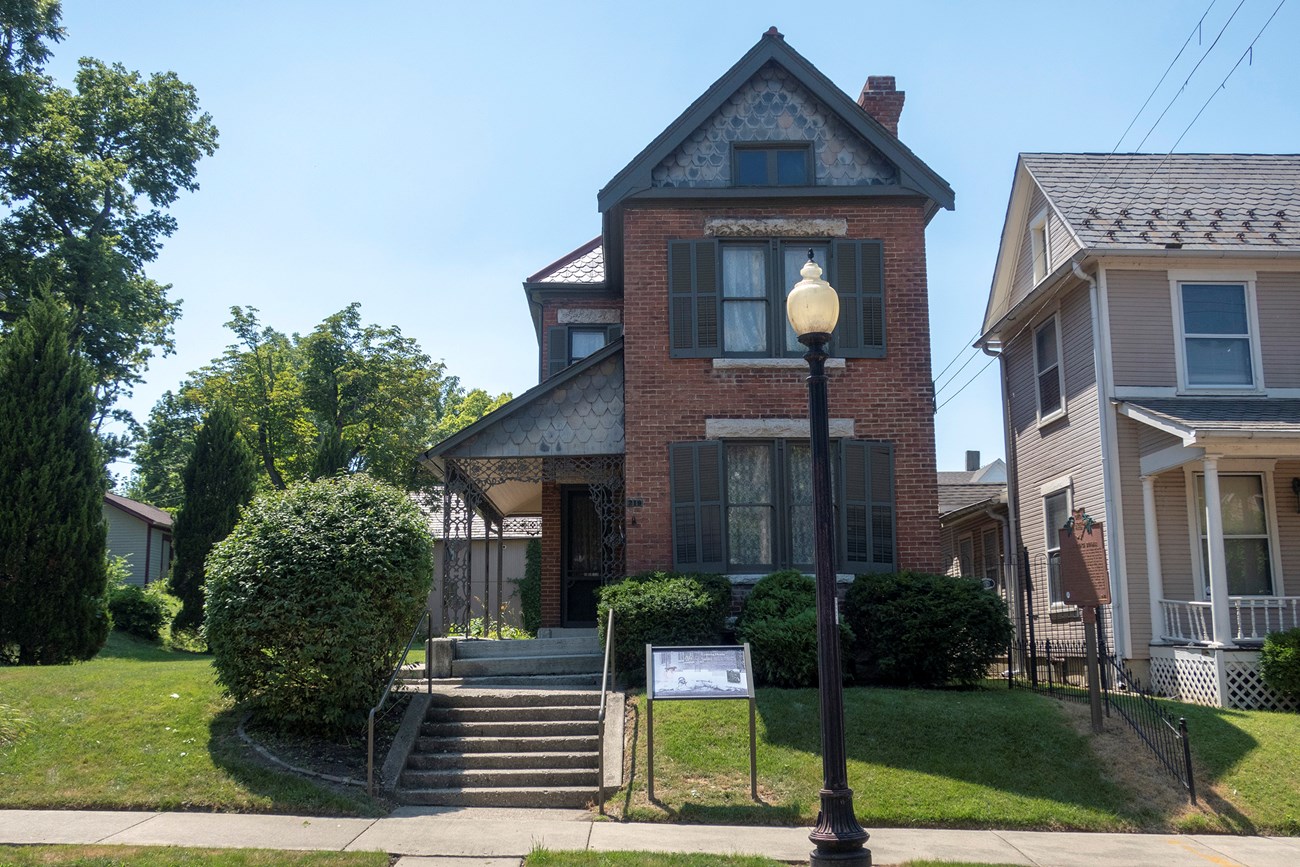
NPS / Leah Edwards
Quick Facts
- Cultural Landscape Type: Historic designed landscape
- National Register Significance Level: National
- National Register Significance Criteria: B, C
- Period of Significance: 1885-1924

